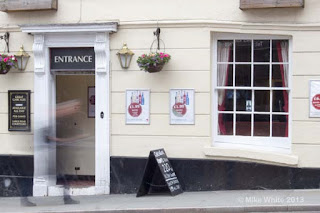We made pinch pots, moulding the clay with our fingers, then added rings or coils of clay to extend them. Above, a ring of clay is being joined onto the body of the pot.
Here's a pot at a later stage. The perforations here imitate those of some ancient pots. Their purpose is not known, but if the pot is filled with lighted grass, air rushes in through the holes and a narrow, hot flame comes out of the top, which could be used for jewellery making.
A more conventional pot being decorated. Curiously, there is no representative art on British pots of this period. There are theories to account for this... Since pottery is fragile, then its destruction might destroy the 'soul' of the thing depicted?
Pit Firing
Here are some pots that were prepared earlier and dried being fired. A fire is built in a pit and when there are lots of ashes, a hollow is scraped in the middle for the pots. The temperature is gradually increased, to drive off the remaining water slowly, to avoid it flashing into steam and blowing the pots apart. The pots are not covered until they're hot enough for the water to have evaporated. The test for this is to spit on a pot; if it flashes to steam, the pot's hot enough.
The pots are covered using a lot of bark, which produces ashes, useful as an insulator.
The fire has to be refueled to keep it hot for an hour or two, to ensure the pots are fired right through. If they're not fully fired, the unfired clay will become soft as soon as the pot's wet.
The impatient potter can sneak a look at the pots, but must cover them back up soon, to avoid thermal shock. The pots are allowed to cool gradually in the ashes, referably overnight.
Of course, you don't just have to make pots.





























